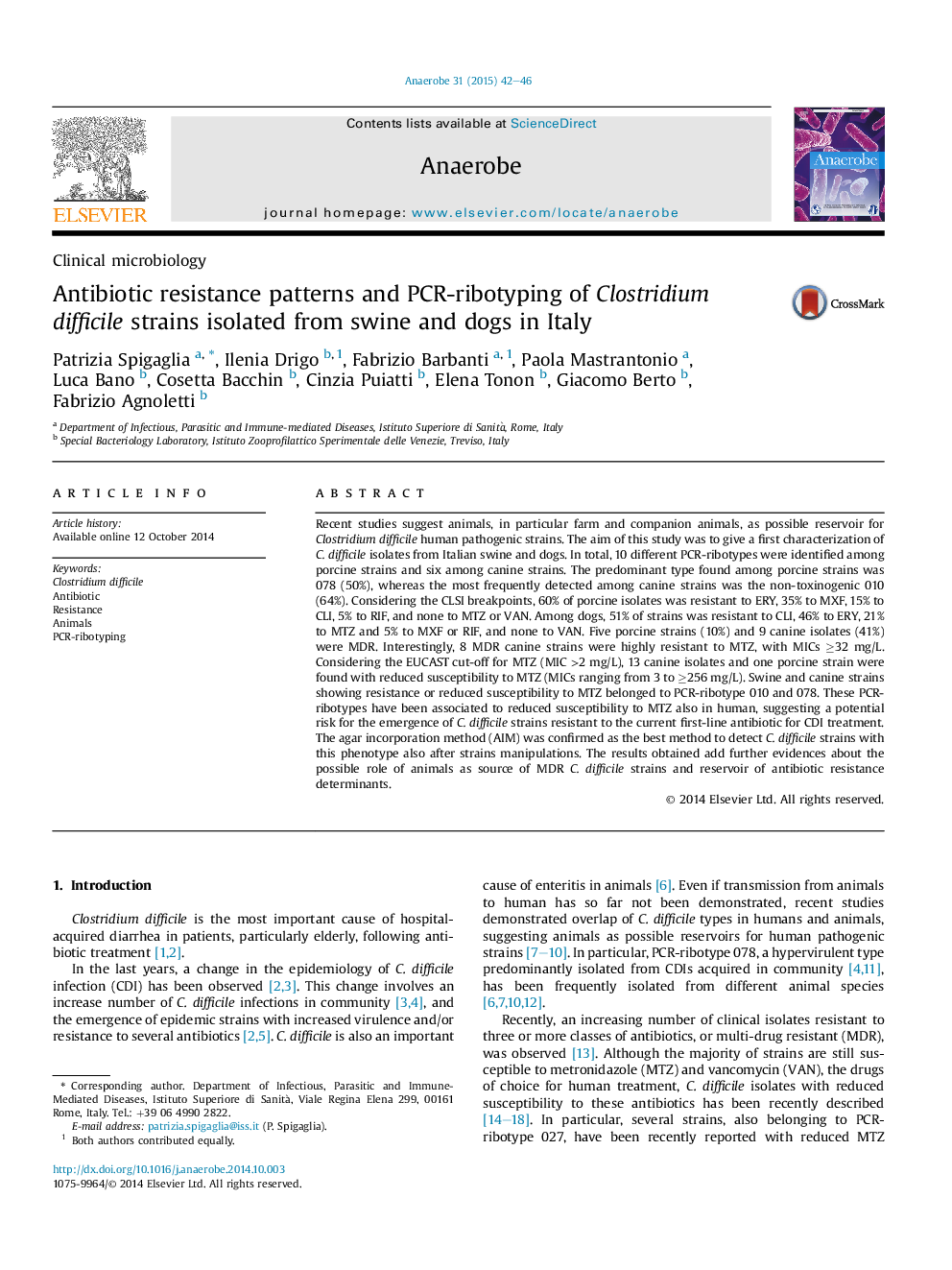| Article ID | Journal | Published Year | Pages | File Type |
|---|---|---|---|---|
| 3394978 | Anaerobe | 2015 | 5 Pages |
•First characterization of Clostridium difficile strains from Italian pigs and dogs.•Several strains belonged to types also detected in humans and most of them were resistant to at least one antibiotic.•Several strains were MDR.•Several canine MDR strains showed reduced susceptibility to metronidazole.•Animals can be a potential source of MDR strains and antibiotic resistance determinants.
Recent studies suggest animals, in particular farm and companion animals, as possible reservoir for Clostridium difficile human pathogenic strains. The aim of this study was to give a first characterization of C. difficile isolates from Italian swine and dogs. In total, 10 different PCR-ribotypes were identified among porcine strains and six among canine strains. The predominant type found among porcine strains was 078 (50%), whereas the most frequently detected among canine strains was the non-toxinogenic 010 (64%). Considering the CLSI breakpoints, 60% of porcine isolates was resistant to ERY, 35% to MXF, 15% to CLI, 5% to RIF, and none to MTZ or VAN. Among dogs, 51% of strains was resistant to CLI, 46% to ERY, 21% to MTZ and 5% to MXF or RIF, and none to VAN. Five porcine strains (10%) and 9 canine isolates (41%) were MDR. Interestingly, 8 MDR canine strains were highly resistant to MTZ, with MICs ≥32 mg/L. Considering the EUCAST cut-off for MTZ (MIC >2 mg/L), 13 canine isolates and one porcine strain were found with reduced susceptibility to MTZ (MICs ranging from 3 to ≥256 mg/L). Swine and canine strains showing resistance or reduced susceptibility to MTZ belonged to PCR-ribotype 010 and 078. These PCR-ribotypes have been associated to reduced susceptibility to MTZ also in human, suggesting a potential risk for the emergence of C. difficile strains resistant to the current first-line antibiotic for CDI treatment. The agar incorporation method (AIM) was confirmed as the best method to detect C. difficile strains with this phenotype also after strains manipulations. The results obtained add further evidences about the possible role of animals as source of MDR C. difficile strains and reservoir of antibiotic resistance determinants.
